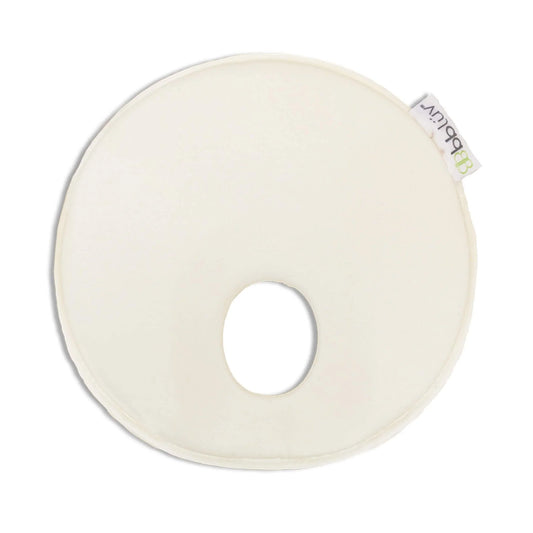Good pacifier hygiene involves frequent cleaning , especially when your child is younger. In this article from the renowned Danish pacifier brand BIBS , they explain one by one the sterilization methods, and which is the safest and most recommended.
Before first use
Remember to sterilize pacifiers when you take them out of the packaging! This is done by placing the pacifiers in boiling water for 5 minutes (on the stove). This method applies to both latex and silicone pacifiers.
In rare cases, natural rubber latex may come off onto the pacifier shield, so it is important to sterilize them in plenty of water , and we recommend sterilizing latex pacifiers separately . This only applies before first use.
Sterilization by scalding (with boiling water)
This is the method we recommend later for cleaning latex and silicone pacifiers:
- Place the pacifiers in a clean container.
- Pour boiling water over the pacifiers.
- Let the pacifiers soak for about 5 minutes.
- Remove them and let them dry on a clean cloth.

This method is gentle, but still kills bacteria without compromising the durability of the pacifier. We only recommend boiling pacifiers before first use, not for subsequent cleaning. Pacifiers are not designed to be boiled repeatedly and may be damaged by continued exposure to high heat.
Sterilization by microwave sterilization
Please note that latex decomposes if the temperature exceeds 100°C, therefore we do not recommend microwave sterilization for natural rubber latex pacifiers.
Silicone can withstand higher temperatures than latex, so you can use microwave sterilization for silicone pacifiers. However, make sure the temperature does not exceed 110°C , because the pacifier shield is made of PP, which will be damaged if the temperature exceeds 110°C. Also, repeatedly exposing pacifiers to temperatures above 100°C can be harmful, and will shorten their durability and lifespan over time.
Our general recommendations are that to use microwave sterilisation you should check the manufacturer's instructions to ensure that the temperature is kept at around 100°C. For most microwaves this means that pacifiers should be heated for a maximum of 60 seconds at 800W (maximum) . Always remember to place pacifiers in water in a sterilisation box designed for this purpose. And never put pacifiers in the microwave without water!
Sterilization using electric steam sterilization devices
Please note that latex decomposes if the temperature exceeds 100°C, therefore we do not recommend the use of steam sterilization devices for natural rubber latex pacifiers.
Silicone can withstand higher temperatures than latex, so you can use electric steam sterilization devices for silicone pacifiers . However, make sure the temperature does not exceed 110°C. The pacifier shield is made of PP, which will be damaged if temperatures exceed 110°C. And just like with microwave sterilization, repeatedly exposing pacifiers to temperatures above 100°C can be harmful to pacifiers.
Therefore, our general recommendations are that when using steam sterilization devices, you should check the manufacturer's instructions to ensure that the temperature is maintained around 100°C.
Sterilization using UV sterilization devices
We do not recommend the use of UV sterilization devices for natural rubber latex or silicone pacifiers.
Natural rubber latex is a natural material that undergoes a natural aging process that can be influenced by external forces such as ultraviolet (UV) light. So never use a UV sterilizer for our latex pacifiers as it will damage the material. Also do not leave natural rubber latex exposed to direct sunlight.
Furthermore, UV light only kills germs if it is exposed directly to the surface of the product containing bacteria, unlike steam, which is a gas and can easily spread across the entire surface of a pacifier regardless of its shape. Therefore, we do not recommend using a UV sterilizer for any of our pacifiers.
Sterilization using sterilizing solutions
We do not recommend using sterilizing solutions for natural rubber latex or silicone pacifiers, as the solution may damage the material if the pacifier is left in it for longer than recommended.
Sterilization by dishwasher
We do not recommend cleaning latex or silicone pacifiers in the dishwasher. Cleaning agents can damage the material (both latex and silicone) and make it brittle. Additionally, most dishwashers do not reach high enough temperatures to properly sterilize pacifiers.
If there is water left in the nipple
After cleaning, it is normal for water to remain in the nipple. This is because all our pacifier nipples are equipped with a valve that allows air to escape when the baby squeezes it. This ventilation system causes the air inside the nipple to escape through the valve, thus flattening the nipple so that it adapts naturally to the baby's oral cavity.
The valve is also the reason why water may remain in the nipple after cleaning and sterilization. If this is the case, simply squeeze the nipple to remove excess water. If there are any water droplets left on the nipple, just let the pacifier air dry.
How often should I clean pacifiers?
Part of good pacifier hygiene is cleaning them frequently. The younger the child, the more important it is to protect them from bacteria and maintain good pacifier hygiene, mainly because their immune system has not yet had the chance to become familiar with all the different bacteria and therefore has not learned to "defend" itself against them.
So you should sterilize your baby's pacifiers regularly, but don't overdo it. Over-sterilization can be harmful to pacifiers, depending on the method. Our general recommendation is to scald pacifiers once a day.
* Original article published in Bibsworld.com *









